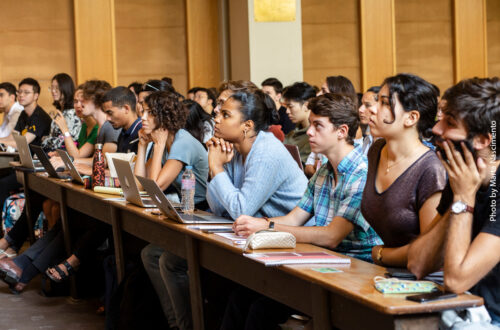The Changing Education Landscape
The education sector has seen changes over the years, but in the last few decades, digital technology has completely revolutionised the way students learn in the classroom.
We have come a long way from copying sentences off blackboards and rote learning from our textbooks; technology is helping teachers engage students in a combination of visual, auditory and kinesthetic ways.
In fact, a whole new division of education has emerged in the wake of technological innovation. Online or distance learning, which allows students to complete an entire course of study without even having to physically attend a lesson, is becoming an increasingly popular option that has opened avenues for many people who do not necessarily have the time or access to on-campus study. Tools powered by artificial intelligence—such as personalized learning platforms and this app—are further enhancing the online education experience, offering tailored feedback, adaptive content, and efficient support for learners around the world.
Technology in the Classroom
All the way from primary school up to university, students are taught computing skills and are encouraged to have their own laptops, giving them instant access to all sorts of information. Educational programs and apps play a role in encouraging students to seek out knowledge in fun and interactive ways, while interactive whiteboards and classroom clickers allow teachers to vary their lesson styles to introduce and reinforce their subject material.
Reporting and assignment handling has also changed dramatically; rather than writing physical report cards to send home once a term, teachers can set, collect and grade work using specialised learning management systems to give ongoing updates of students’ progress to both the students and their parents.
Changing the Way Students Learn
Using computers and other devices are just the tip of the iceberg; technology allows increased communication and collaboration within and beyond the classroom. Students can share their opinions on social networks, conduct surveys, create multimedia presentations, attend webinar sessions and even conduct lively discussions with other students from across the globe.
In fact, a whole new division of education has emerged in the wake of technological innovation. Online or distance learning, which allows students to complete an entire course of study without even having to physically attend a lesson, is becoming an increasingly popular option that has opened avenues for many people who do not necessarily have the time or access to on campus study.
Helping Special-Needs Students Excel
Another brilliant outcome of educational technology is the additional support it provides to students with special needs. It is encouraging to see range of assistive technology available that allows students with physical or learning disabilities to understand the subject material and to participate actively in their classes.
Some of these revolutionary technologies include speech recognition, screen-reading tools, Braille displays and text-to-speech solutions for the visually impaired; and sound amplifiers, closed-captioning applications and video conferencing technologies that facilitate sign language and lip-reading for the hearing impaired (Hayes 2013).
Equipping Students for the Future
Through continued use in education, students are coached on how to use technology in a more responsible and strategic way, which can help them in decision-making and can also encourage self-discipline. Further, technology has a role to play in any industry, hence the use of technology in education will help prepare students for the real-world environment and to help them achieve their future careers.
Nevertheless, the inevitable question still arises; does technology truly benefit students or does it detract from the true essence of learning?
You can read more about this debate in the next article, entitled ‘Should Laptops be Banned in Lecture Theatres?’





